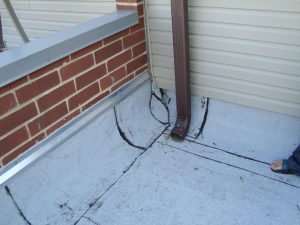Roof Inspections
The Illinois Standards of Practice for Home Inspectors states:
When, pursuant to the written agreement with a client, the roof system is inspected, the home inspector shall:
1) Inspect the roof covering, roof drainage systems, flashings, skylights, chimneys, and roof penetrations; and
2) Describe the roof covering and report the methods used to inspect the roof."

Most roof defects come from objects penetrating the roof. Soil stacks, chimneys, skylights all have the potential for leaks, where thy meet the roof.
While the exterior flashings may be noticeably deficient, often signs of roof problems appear in the attic.
The roofing part of the home inspection is a bit unique to each home that is inspected. The biggest question we get is , "How did you inspect the roof?"
The short answer is, "It depends". The method of roof inspection will be included in your report.
"Walking the roof" - when the inspector is physically on top of the roof. This is what most people assume happens on every roof inspection, however that is not always the case.
There are a variety of reasons that your home inspector can not safely walk the roof. Height, slope, and weather conditions are just some of the factors that would make getting on the roof hazardous.
As much as we love our clients, a home inspector that gets injured by not following safety guidelines is not going to be able to complete your inspection.
If the roof is not directly accessed, your inspector will generally observe from ground level using high powered binoculars or camera.
The method of inspection for your roof, and any noted defects will be in your written inspection report.
